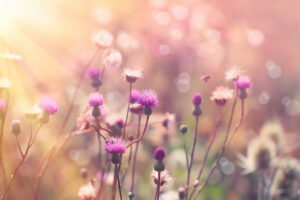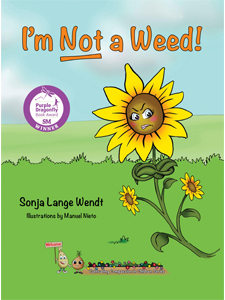Weed Your Garden Day is June 13
Weed? What is a weed? Just for clarification, we are not talking only about the plant that has many names such as cannabis, marijuana pot, grass, Mary Jane, bud, ganga, herb, grass, dope, hash, trees, hemp, and “weed. “We are talking about any plant that is rooted in your garden of life.
 June 13 is “Weed Your Garden Day.” But before we start weeding, and yanking those healthy, thriving plants out of the ground, what plants do we define as a weed? The definition of a weed that my dad implanted in my mind when I was a child is that a weed is anything that he did not plant. That made it clear for him. I remember when my dad considered this one thriving purple plant, which was a thistle, a weed. He yanked it out, but my oldest sister considered it a valuable plant and was extremely upset.
June 13 is “Weed Your Garden Day.” But before we start weeding, and yanking those healthy, thriving plants out of the ground, what plants do we define as a weed? The definition of a weed that my dad implanted in my mind when I was a child is that a weed is anything that he did not plant. That made it clear for him. I remember when my dad considered this one thriving purple plant, which was a thistle, a weed. He yanked it out, but my oldest sister considered it a valuable plant and was extremely upset.
Who was right? Did you know that the nectar and pollen of native thistles are food sources to bees, butterflies, and other pollinators? Several insects feed on their leaves, stems, flowers, and seeds, while some birds feed on thistle seeds. These nectar sources help support pollinators .
But there are many “weeds” that are toxic. These weeds can steal water, sunlight, and nutrients from the soil. Some even release poisonous chemicals into the dirt that inhibit the growth of other plants. Some weeds once they take root, can take over and kill wanted vegetables and flowers. Once aware, quickly dig deep and remove these weeds out of your garden to allow room for the plants you what to grow and thrive.
Did you know that purple thistle is part of the sunflower family? Some people consider sunflowers a weed, too. Hence my children’s book, “I’m Not a Weed,” which is about Suzy Sunflower who is not initially accepted into the garden. So, are thistles and sunflowers a weed? Dr. Wayne Dyer stated, “The only difference between a flower and a weed is a judgement.” So how do we “judge?”
children’s book, “I’m Not a Weed,” which is about Suzy Sunflower who is not initially accepted into the garden. So, are thistles and sunflowers a weed? Dr. Wayne Dyer stated, “The only difference between a flower and a weed is a judgement.” So how do we “judge?”
I have learned throughout life, that there are many things that blow into my compassionate garden of life and take root, many that I certainly did not intend to plant. Some of these I would define as a weed, and others, I would now define as unplanned beautiful blooms, even though I may not have considered that initially. As Dr. Dyer stated, it truly is a judgment call that requires some thought, analysis, and maybe a different way of viewing it. It may require allowing it to take root, grow and see what happens.
Before you start pulling out those weeds in your compassionate garden of life, think about it. What is adding value and direction to your purpose and goals in life and what are distractions. I particularly like Ralph Waldo Emerson’s definition of a weed, “ A plant whose virtues have not yet been discovered.” So weed your compassionate garden of life, but don’t be too hasty in what you pull out and what you allow to grow and thrive. That “weed” may be the beautiful, fragrant, purposeful flower you have been waiting for all your life, that just needs care, nurturing, and time to develop.
Sonja Wendt
- Planting Seeds of Compassion One Story at a Time
- Author and Reading & Seeding Intergenerational Leader
- Cultivating Compassion in Children Books Series
- https://www.sonjawendt.com/
- Books Available on Amazon: http://bit.ly/SonjaLangeWendt
©2022 sonjalangewendt All Rights Reserved


Comments are closed.